-
Executive Summary
-
\r\n1.1 Definition 10
-
\r\n1.2 Scope of Study
-
10
-
\r\n1.3 Research Objective 10
-
\r\n1.4 Assumptions & Limitations
-
11
-
\r\n1.4.1 Assumptions 11
-
\r\n1.4.2 Limitations 11
-
\r\n1.5 Market
-
Structure 11
-
\r\n
-
\r\n2 Market Introduction
-
\r\n2.1 Definition
-
17
-
\r\n2.2 Scope of the Study 17
-
\r\n2.3 List of Assumptions 18
-
\r\n2.4
-
Market Structure 18
-
\r\n2.5 Key Takeaways 19
-
\r\n
-
\r\n3
-
Market Insights
-
\r\n3.1 Introduction
-
\r\n3.2 Primary Research
-
\r\n3.3
-
Secondary research
-
\r\n3.4 Market Size Estimation
-
\r\n
-
\r\n4
-
Research Methodology
-
\r\n4.1 Research Process 28
-
\r\n4.2 Primary Research
-
29
-
\r\n4.3 Secondary Research 30
-
\r\n4.4 Market Size Estimation 30
-
\r\n4.5
-
Forecast Model 31
-
\r\n
-
\r\n5 Market Dynamics
-
\r\n5.1 Introduction
-
33
-
\r\n5.2 Drivers 34
-
\r\n5.2.1 Increasing consumption of electronic
-
devices, equipment, and appliances 34
-
\r\n5.2.2 Surging demand from medical
-
devices & equipment 34
-
\r\n5.2.3 Stringent environmental regulations against
-
the use of Cr6 35
-
\r\n5.3 Restraints 35
-
\r\n5.3.1 High capital investment
-
35
-
\r\n5.4 Opportunities 36
-
\r\n5.4.1 Growing demand from renewable
-
energy sector, especially from solar energy 36
-
\r\n5.5 Challenges 36
-
\r\n5.5.1
-
Technical complexities 36
-
\r\n6 Market Impact Analysis
-
\r\n6.1 Supply
-
Chain Analysis 38
-
\r\n6.1.1 Raw Material 38
-
\r\n6.1.2 Vapor Deposition
-
Producers 38
-
\r\n6.1.3 Distributors 39
-
\r\n6.1.4 End-use Industries
-
39
-
\r\n6.2 Porter’s Five Forces 39
-
\r\n6.2.1 Threat of new entrants
-
39
-
\r\n6.2.2 The intensity of competitive rivalry 39
-
\r\n6.2.3 Bargaining
-
power of supplier 39
-
\r\n6.2.4 Bargaining power of buyer 39
-
\r\n6.2.5
-
Threat of Substitute 39
-
\r\n7 Global Vapor Deposition Market, By Process
-
\r\n7.1
-
Chemical Vapor Deposition 43
-
\r\n7.1.1 Low Pressure CVD 43
-
\r\n7.1.2
-
Atmospheric Pressure CVD 44
-
\r\n7.1.3 Plasma Enhanced CVD 44
-
\r\n7.1.4
-
Metal Organic CVD 45
-
\r\n7.1.5 Others CVD 45
-
\r\n7.2 Physical Vapor
-
Deposition 46
-
\r\n7.2.1 Cathodic Arc Deposition 46
-
\r\n7.2.2 Electron
-
Beam PVD 47
-
\r\n7.2.3 Sputter Deposition 47
-
\r\n7.2.4 Others PVD 48
-
\r\n8
-
Global Vapor Deposition Market, By Application
-
\r\n8.1 Microelectronics 51
-
\r\n8.2
-
Cutting tool 51
-
\r\n8.3 Medical Devices & Equipment 52
-
\r\n8.4 Decorative
-
Coatings 52
-
\r\n8.5 Others 53
-
\r\n
-
\r\n9 Global Vapor Deposition
-
Market, By End-use Industry
-
\r\n9.1 Electrical & Electronics 56
-
\r\n9.2
-
Automotive 56
-
\r\n9.3 Aerospace 57
-
\r\n9.4 Metal Industry 57
-
\r\n9.5
-
Medical 58
-
\r\n9.6 Others 58
-
\r\n
-
\r\n10 Global Vapor deposition
-
Market, By Region
-
\r\n10.1 Introduction 60
-
\r\n10.2 North America 63
-
\r\n10.2.1
-
U.S 66
-
\r\n10.2.2 Canada 68
-
\r\n10.3 Europe 70
-
\r\n10.3.1 Germany
-
73
-
\r\n10.3.2 France 75
-
\r\n10.3.3 UK 77
-
\r\n10.3.4 Spain 79
-
\r\n10.3.5
-
Rest of Europe 81
-
\r\n10.4 Asia-Pacific 83
-
\r\n10.4.1 China 86
-
\r\n10.4.2
-
Japan 88
-
\r\nSouth Korea 90
-
\r\n10.4.3 Taiwan 92
-
\r\n10.4.4 India
-
94
-
\r\n10.4.5 Rest of Asia-Pacific 96
-
\r\n10.5 Middle East & Africa
-
98
-
\r\n10.5.1 GCC 101
-
\r\n10.5.2 South Africa 103
-
\r\n10.5.3 Rest
-
of Middle East & Africa 105
-
\r\n10.6 Latin America 107
-
\r\n10.6.1
-
Mexico 110
-
\r\n10.6.2 Brazil 112
-
\r\n10.6.3 Rest of Latin America 114
-
\r\n
-
\r\n11
-
Competitive Landscape
-
\r\n11.1 Competitive Landscape 117
-
\r\n11.1.1
-
Introduction 117
-
\r\n11.1.2 Key development analysis 117
-
\r\n
-
\r\n12
-
Company Profiles
-
\r\n12.1 Oerlikon Balzers Coating AG 120
-
\r\n12.1.1
-
Company Overview 120
-
\r\n12.1.2 Financial Overview 120
-
\r\n12.1.3 Products
-
Offerings 121
-
\r\n12.1.4 Key Developments 121
-
\r\n12.1.5 SWOT Analysis
-
121
-
\r\n12.1.6 Key Strategy 121
-
\r\n12.2 ULVAC Technologies, Inc. 122
-
\r\n12.2.1
-
Company Overview 122
-
\r\n12.2.2 Financial Overview 122
-
\r\n12.2.3 Products
-
Offerings 123
-
\r\n12.2.4 Key Developments 123
-
\r\n12.2.5 SWOT Analysis
-
123
-
\r\n12.2.6 Key Strategy 123
-
\r\n12.3 IHI Ionbond AG 124
-
\r\n12.3.1
-
Company Overview 124
-
\r\n12.3.2 Financial Overview 124
-
\r\n12.3.3 Products
-
Offerings 125
-
\r\n12.3.4 Key Developments 125
-
\r\n12.3.5 SWOT Analysis
-
125
-
\r\n12.3.6 Key Strategy 125
-
\r\n12.4 Applied Materials Inc. 126
-
\r\n12.4.1
-
Company Overview 126
-
\r\n12.4.2 Financial Overview 126
-
\r\n12.4.3 Products
-
Offerings 127
-
\r\n12.4.4 Key Developments 127
-
\r\n12.4.5 SWOT Analysis
-
127
-
\r\n12.4.6 Key Strategy 127
-
\r\n12.5 JUSUNG ENGINEERING Co., Ltd.
-
128
-
\r\n12.5.1 Company Overview 128
-
\r\n12.5.2 Financial Overview 128
-
\r\n12.5.3
-
Products Offerings 129
-
\r\n12.5.4 Key Developments 129
-
\r\n12.5.5 SWOT
-
Analysis 129
-
\r\n12.5.6 Key Strategy 129
-
\r\n12.6 ASM International
-
N.V. 130
-
\r\n12.6.1 Company Overview 130
-
\r\n12.6.2 Financial Overview
-
130
-
\r\n12.6.3 Products Offerings 131
-
\r\n12.6.4 Key Developments 131
-
\r\n12.6.5
-
SWOT Analysis 131
-
\r\n12.6.6 Key Strategy 131
-
\r\n12.7 LAM RESEARCH
-
CORPORATION 132
-
\r\n12.7.1 Company Overview 132
-
\r\n12.7.2 Financial
-
Overview 132
-
\r\n12.7.3 Products Offerings 133
-
\r\n12.7.4 Key Developments
-
133
-
\r\n12.7.5 SWOT Analysis 133
-
\r\n12.7.6 Key Strategy 133
-
\r\n12.8
-
Kurt J. Lesker 134
-
\r\n12.8.1 Company Overview 134
-
\r\n12.8.2 Financial
-
Overview 134
-
\r\n12.8.3 Products Offerings 134
-
\r\n12.8.4 Key Developments
-
134
-
\r\n12.8.5 SWOT Analysis 135
-
\r\n12.8.6 Key Strategy 135
-
\r\n12.9
-
Plasma-Therm LLC. 136
-
\r\n12.9.1 Company Overview 136
-
\r\n12.9.2 Financial
-
Overview 136
-
\r\n12.9.3 Products Offerings 136
-
\r\n12.9.4 Key Developments
-
136
-
\r\n12.9.5 SWOT Analysis 137
-
\r\n12.9.6 Key Strategy 137
-
\r\n12.10
-
Aurora Scientific Corp. 138
-
\r\n12.10.1 Company Overview 138
-
\r\n12.10.2
-
Financial Overview 138
-
\r\n12.10.3 Products Offerings 138
-
\r\n12.10.4
-
Key Developments 138
-
\r\n12.10.5 SWOT Analysis 139
-
\r\n12.10.6 Key Strategy
-
139
-
\r\n
-
\r\n13 Conclusion
-
\r\n13.1 Discussion Blue Print
-
86
-
\r\n14 List Of Tables
-
\r\nTABLE 1 MARKET SYNOPSIS 15
-
\r\nTABLE
-
LIST OF ASSUMPTIONS 18
-
\r\nTABLE 3 GLOBAL VAPOR DEPOSITION MARKET, BY PROCESS,
-
\r\nTABLE 4 GLOBAL VAPOR DEPOSITION MARKET FOR
-
CHEMICAL VAPOR DEPOSITION, 2020-2027 (USD MILLION) 43
-
\r\nTABLE 5 GLOBAL VAPOR
-
DEPOSITION MARKET FOR LOW PRESSURE CVD, 2020-2027 (USD MILLION) 43
-
\r\nTABLE
-
GLOBAL VAPOR DEPOSITION MARKET FOR ATMOSPHERIC PRESSURE CVD, 2020-2027 (USD MILLION)
-
44
-
\r\nTABLE 7 GLOBAL VAPOR DEPOSITION MARKET FOR PLASMA ENHANCED CVD, 2020-2027
-
(USD MILLION) 44
-
\r\nTABLE 8 GLOBAL VAPOR DEPOSITION MARKET FOR METAL ORGANIC
-
CVD, 2020-2027 (USD MILLION) 45
-
\r\nTABLE 9 GLOBAL VAPOR DEPOSITION MARKET
-
FOR OTHERS CVD, 2020-2027 (USD MILLION) 45
-
\r\nTABLE 10 GLOBAL VAPOR DEPOSITIONMARKET
-
FOR PHYSICAL VAPOR DEPOSITION, 2020-2027 (USD MILLION) 46
-
\r\nTABLE 11 GLOBAL
-
VAPOR DEPOSITION MARKET FOR CATHODIC ARC DEPOSITION, 2020-2027 (USD MILLION) 46
-
\r\nTABLE
-
GLOBAL VAPOR DEPOSITION MARKET FOR ELECTRON BEAM PVD, 2020-2027 (USD MILLION)
-
47
-
\r\nTABLE 13 GLOBAL VAPOR DEPOSITION MARKET FOR SPUTTER DEPOSITION, 2020-2027
-
(USD MILLION) 47
-
\r\nTABLE 14 GLOBAL VAPOR DEPOSITION MARKET FOR OTHERS PVD,
-
\r\nTABLE 15 GLOBAL VAPOR DEPOSITION MARKET, BY
-
APPLICATION, 2020-2027 (USD MILLION) 50
-
\r\nTABLE 16 GLOBAL VAPOR DEPOSITIONMARKET
-
FOR MICROELECTRONICS, 2020-2027 (USD MILLION) 51
-
\r\nTABLE 17 GLOBAL VAPOR
-
DEPOSITION MARKET FOR CUTTING TOOL, 2020-2027 (USD MILLION) 51
-
\r\nTABLE 18
-
GLOBAL VAPOR DEPOSITION MARKET FOR MEDICAL DEVICES & EQUIPMENT, 2020-2027 (USD
-
MILLION) 52
-
\r\nTABLE 19 GLOBAL VAPOR DEPOSITION MARKET FOR DECORATIVE COATINGS,
-
\r\nTABLE 20 GLOBAL VAPOR DEPOSITION MARKET FOR
-
OTHERS, 2020-2027 (USD MILLION) 53
-
\r\nTABLE 21 GLOBAL VAPOR DEPOSITION MARKET,
-
BY END-USE INDUSTRY, 2020-2027 (USD MILLION) 55
-
\r\nTABLE 22 GLOBAL VAPOR
-
DEPOSITION MARKET FOR ELECTRICAL & ELECTRONICS, 2020-2027 (USD MILLION) 56
-
\r\nTABLE
-
GLOBAL VAPOR DEPOSITION MARKET FOR AUTOMOTIVE, 2020-2027 (USD MILLION) 56
-
\r\nTABLE
-
GLOBAL VAPOR DEPOSITION MARKET FOR AEROSPACE, 2020-2027 (USD MILLION) 57
-
\r\nTABLE
-
GLOBAL VAPOR DEPOSITION MARKET FOR METAL INDUSTRY, 2020-2027 (USD MILLION) 57
-
\r\nTABLE
-
GLOBAL VAPOR DEPOSITION MARKET FOR MEDICAL, 2020-2027 (USD MILLION) 58
-
\r\nTABLE
-
GLOBAL VAPOR DEPOSITION MARKET FOR OTHERS, 2020-2027 (USD MILLION) 58
-
\r\nTABLE
-
GLOBAL VAPOR DEPOSITION MARKET, BY REGION, 2020-2027 (USD MILLION) 60
-
\r\nTABLE
-
GLOBAL VAPOR DEPOSITION MARKET, BY PROCESS , 2020-2027 (USD MILLION) 61
-
\r\nTABLE
-
GLOBAL VAPOR DEPOSITION MARKET, BY APPLICATION , 2020-2027 (USD MILLION) 61
-
\r\nTABLE
-
GLOBAL VAPOR DEPOSITION MARKET, BY END-USE INDUSTRY , 2020-2027 (USD MILLION)
-
62
-
\r\nTABLE 32 NORTH AMERICA VAPOR DEPOSITION MARKET, BY COUNTRY, 2020-2027
-
(USD MILLION) 64
-
\r\nTABLE 33 NORTH AMERICA VAPOR DEPOSITION MARKET, BY PROCESS
-
, 2020-2027 (USD MILLION) 64
-
\r\nTABLE 34 NORTH AMERICA VAPOR DEPOSITION MARKET,
-
BY APPLICATION , 2020-2027 (USD MILLION) 65
-
\r\nTABLE 35 NORTH AMERICA VAPOR
-
DEPOSITION MARKET, BY END-USE INDUSTRY , 2020-2027 (USD MILLION) 65
-
\r\nTABLE
-
U.S VAPOR DEPOSITION MARKET, BY PROCESS , 2020-2027 (USD MILLION) 66
-
\r\nTABLE
-
U.S VAPOR DEPOSITION MARKET, BY APPLICATION , 2020-2027 (USD MILLION) 67
-
\r\nTABLE
-
U.S VAPOR DEPOSITION MARKET, BY END-USE INDUSTRY , 2020-2027 (USD MILLION) 67
-
\r\nTABLE
-
CANADA VAPOR DEPOSITION MARKET, BY PROCESS , 2020-2027 (USD MILLION) 68
-
\r\nTABLE
-
CANADA VAPOR DEPOSITION MARKET, BY APPLICATION , 2020-2027 (USD MILLION) 69
-
\r\nTABLE
-
CANADA VAPOR DEPOSITION MARKET, BY END-USE INDUSTRY , 2020-2027 (USD MILLION)
-
69
-
\r\nTABLE 42 EUROPE VAPOR DEPOSITION MARKET, BY COUNTRY, 2020-2027 (USD
-
MILLION) 71
-
\r\nTABLE 43 EUROPE VAPOR DEPOSITION MARKET, BY PROCESS , 2020-2027
-
(USD MILLION) 71
-
\r\nTABLE 44 EUROPE VAPOR DEPOSITION MARKET, BY APPLICATION
-
, 2020-2027 (USD MILLION) 72
-
\r\nTABLE 45 EUROPE VAPOR DEPOSITION MARKET,
-
BY END-USE INDUSTRY , 2020-2027 (USD MILLION) 72
-
\r\nTABLE 46 GERMANY VAPOR
-
DEPOSITION MARKET, BY PROCESS , 2020-2027 (USD MILLION) 73
-
\r\nTABLE 47 GERMANY
-
VAPOR DEPOSITION MARKET, BY APPLICATION , 2020-2027 (USD MILLION) 73
-
\r\nTABLE
-
GERMANY VAPOR DEPOSITION MARKET, BY END-USE INDUSTRY , 2020-2027 (USD MILLION)
-
74
-
\r\nTABLE 49 FRANCE VAPOR DEPOSITION MARKET, BY PROCESS , 2020-2027 (USD
-
MILLION) 75
-
\r\nTABLE 50 FRANCE VAPOR DEPOSITION MARKET, BY APPLICATION ,
-
\r\nTABLE 51 FRANCE VAPOR DEPOSITION MARKET, BY
-
END-USE INDUSTRY , 2020-2027 (USD MILLION) 76
-
\r\nTABLE 52 UK VAPOR DEPOSITION
-
MARKET, BY PROCESS , 2020-2027 (USD MILLION) 77
-
\r\nTABLE 53 UK VAPOR DEPOSITION
-
MARKET, BY APPLICATION , 2020-2027 (USD MILLION) 78
-
\r\nTABLE 54 UK VAPOR
-
DEPOSITION MARKET, BY END-USE INDUSTRY , 2020-2027 (USD MILLION) 79
-
\r\nTABLE
-
SPAIN VAPOR DEPOSITION MARKET, BY PROCESS , 2020-2027 (USD MILLION) 79
-
\r\nTABLE
-
SPAIN VAPOR DEPOSITION MARKET, BY APPLICATION , 2020-2027 (USD MILLION) 80
-
\r\nTABLE
-
SPAIN VAPOR DEPOSITION MARKET, BY END-USE INDUSTRY , 2020-2027 (USD MILLION)
-
80
-
\r\nTABLE 58 REST OF EUROPE VAPOR DEPOSITION MARKET, BY PROCESS , 2020-2027
-
(USD MILLION) 81
-
\r\nTABLE 59 REST OF EUROPE VAPOR DEPOSITION MARKET, BY APPLICATION
-
, 2020-2027 (USD MILLION) 82
-
\r\nTABLE 60 REST OF EUROPE VAPOR DEPOSITION
-
MARKET, BY END-USE INDUSTRY , 2020-2027 (USD MILLION) 82
-
\r\nTABLE 61 ASIA-PACIFIC
-
VAPOR DEPOSITION MARKET, BY COUNTRY, 2020-2027 (USD MILLION) 84
-
\r\nTABLE
-
ASIA-PACIFIC VAPOR DEPOSITION MARKET, BY PROCESS , 2020-2027 (USD MILLION) 84
-
\r\nTABLE
-
ASIA-PACIFIC VAPOR DEPOSITION MARKET, BY APPLICATION , 2020-2027 (USD MILLION)
-
85
-
\r\nTABLE 64 ASIA-PACIFIC VAPOR DEPOSITION MARKET, BY END-USE INDUSTRY
-
, 2020-2027 (USD MILLION) 85
-
\r\nTABLE 65 CHINA VAPOR DEPOSITION MARKET, BY
-
PROCESS , 2020-2027 (USD MILLION) 86
-
\r\nTABLE 66 CHINA VAPOR DEPOSITION MARKET,
-
BY APPLICATION , 2020-2027 (USD MILLION) 87
-
\r\nTABLE 67 CHINA VAPOR DEPOSITION
-
MARKET, BY END-USE INDUSTRY , 2020-2027 (USD MILLION) 87
-
\r\nTABLE 68 JAPAN
-
VAPOR DEPOSITION MARKET, BY PROCESS , 2020-2027 (USD MILLION) 88
-
\r\nTABLE
-
JAPAN VAPOR DEPOSITION MARKET, BY APPLICATION , 2020-2027 (USD MILLION) 89
-
\r\nTABLE
-
JAPAN VAPOR DEPOSITION MARKET, BY END-USE INDUSTRY , 2020-2027 (USD MILLION)
-
89
-
\r\nTABLE 71 SOUTH KOREA VAPOR DEPOSITION MARKET, BY PROCESS , 2020-2027
-
(USD MILLION) 90
-
\r\nTABLE 72 SOUTH KOREA VAPOR DEPOSITION MARKET, BY APPLICATION
-
, 2020-2027 (USD MILLION) 91
-
\r\nTABLE 73 SOUTH KOREA VAPOR DEPOSITION MARKET,
-
BY END-USE INDUSTRY , 2020-2027 (USD MILLION) 91
-
\r\nTABLE 74 TAIWAN VAPOR
-
DEPOSITION MARKET, BY PROCESS , 2020-2027 (USD MILLION) 92
-
\r\nTABLE 75 TAIWAN
-
VAPOR DEPOSITION MARKET, BY APPLICATION , 2020-2027 (USD MILLION) 93
-
\r\nTABLE
-
TAIWAN VAPOR DEPOSITION MARKET, BY END-USE INDUSTRY , 2020-2027 (USD MILLION)
-
93
-
\r\nTABLE 77 INDIA VAPOR DEPOSITION MARKET, BY PROCESS , 2020-2027 (USD
-
MILLION) 94
-
\r\nTABLE 78 INDIA VAPOR DEPOSITION MARKET, BY APPLICATION , 2020-2027
-
(USD MILLION) 95
-
\r\nTABLE 79 INDIA VAPOR DEPOSITION MARKET, BY END-USE INDUSTRY
-
, 2020-2027 (USD MILLION) 95
-
\r\nTABLE 80 REST OF ASIA-PACIFIC VAPOR DEPOSITION
-
MARKET, BY PROCESS , 2020-2027 (USD MILLION) 96
-
\r\nTABLE 81 REST OF ASIA-PACIFIC
-
VAPOR DEPOSITION MARKET, BY APPLICATION , 2020-2027 (USD MILLION) 97
-
\r\nTABLE
-
REST OF ASIA-PACIFIC VAPOR DEPOSITION MARKET, BY END-USE INDUSTRY , 2020-2027
-
(USD MILLION) 97
-
\r\nTABLE 83 MIDDLE EAST & AFRICA VAPOR DEPOSITION MARKET,
-
BY PROCESS , 2020-2027 (USD MILLION) 99
-
\r\nTABLE 84 MIDDLE EAST & AFRICA
-
VAPOR DEPOSITION MARKET, BY PROCESS , 2020-2027 (USD MILLION) 99
-
\r\nTABLE
-
MIDDLE EAST & AFRICA VAPOR DEPOSITION MARKET, BY APPLICATION , 2020-2027
-
(USD MILLION) 100
-
\r\nTABLE 86 MIDDLE EAST & AFRICA VAPOR DEPOSITION MARKET,
-
BY END-USE INDUSTRY , 2020-2027 (USD MILLION) 100
-
\r\nTABLE 87 GCC VAPOR DEPOSITION
-
MARKET, BY PROCESS , 2020-2027 (USD MILLION) 101
-
\r\nTABLE 88 GCC VAPOR DEPOSITION
-
MARKET, BY APPLICATION , 2020-2027 (USD MILLION) 102
-
\r\nTABLE 89 GCC VAPOR
-
DEPOSITION MARKET, BY END-USE INDUSTRY , 2020-2027 (USD MILLION) 102
-
\r\nTABLE
-
SOUTH AFRICA VAPOR DEPOSITION MARKET, BY PROCESS , 2020-2027 (USD MILLION) 103
-
\r\nTABLE
-
SOUTH AFRICA VAPOR DEPOSITION MARKET, BY APPLICATION , 2020-2027 (USD MILLION)
-
104
-
\r\nTABLE 92 SOUTH AFRICA VAPOR DEPOSITION MARKET, BY END-USE INDUSTRY
-
, 2020-2027 (USD MILLION) 104
-
\r\nTABLE 93 REST OF MIDDLE EAST & AFRICA
-
VAPOR DEPOSITION MARKET, BY PROCESS , 2020-2027 (USD MILLION) 105
-
\r\nTABLE
-
REST OF MIDDLE EAST & AFRICA VAPOR DEPOSITION MARKET, BY APPLICATION , 2020-2027
-
(USD MILLION) 106
-
\r\nTABLE 95 REST OF MIDDLE EAST & AFRICA VAPOR DEPOSITION
-
MARKET, BY END-USE INDUSTRY , 2020-2027 (USD MILLION) 106
-
\r\nTABLE 96 LATIN
-
AMERICA VAPOR DEPOSITION MARKET, BY COUNTRY , 2020-2027 (USD MILLION) 108
-
\r\nTABLE
-
LATIN AMERICA VAPOR DEPOSITION MARKET, BY PROCESS , 2020-2027 (USD MILLION) 108
-
\r\nTABLE
-
LATIN AMERICA VAPOR DEPOSITION MARKET, BY APPLICATION , 2020-2027 (USD MILLION)
-
109
-
\r\nTABLE 99 LATIN AMERICA VAPOR DEPOSITION MARKET, BY END-USE INDUSTRY
-
, 2020-2027 (USD MILLION) 109
-
\r\nTABLE 100 MEXICO VAPOR DEPOSITION MARKET,
-
BY PROCESS , 2020-2027 (USD MILLION) 110
-
\r\nTABLE 101 MEXICO VAPOR DEPOSITION
-
MARKET, BY APPLICATION , 2020-2027 (USD MILLION) 111
-
\r\nTABLE 102 MEXICO
-
VAPOR DEPOSITION MARKET, BY END-USE INDUSTRY , 2020-2027 (USD MILLION) 111
-
\r\nTABLE
-
BRAZIL VAPOR DEPOSITION MARKET, BY PROCESS , 2020-2027 (USD MILLION) 112
-
\r\nTABLE
-
BRAZIL VAPOR DEPOSITION MARKET, BY APPLICATION , 2020-2027 (USD MILLION) 113
-
\r\nTABLE
-
BRAZIL VAPOR DEPOSITION MARKET, BY END-USE INDUSTRY , 2020-2027 (USD MILLION)
-
113
-
\r\nTABLE 106 REST OF LATIN AMERICA VAPOR DEPOSITION MARKET, BY PROCESS
-
, 2020-2027 (USD MILLION) 114
-
\r\nTABLE 107 REST OF LATIN AMERICA VAPOR DEPOSITION
-
MARKET, BY APPLICATION , 2020-2027 (USD MILLION) 115
-
\r\nTABLE 108 REST OF
-
LATIN AMERICA VAPOR DEPOSITION MARKET, BY END-USE INDUSTRY , 2020-2027 (USD MILLION)
-
115
-
\r\nTABLE 109 KEY DEVELOPMENT ABNALYSIS 118
-
\r\n
-
\r\n15
-
List Of Figures
-
\r\nFIGURE 1 GLOBAL VAPOR DEPOSITION MARKET: MARKET STRUCTURE
-
18
-
\r\nFIGURE 2 KEY TAKEAWAYS OF THE VAPOR DEPOSITION MARKET 19
-
\r\nFIGURE
-
NORTH AMERICA MARKET SIZE & MARKET SHARE BY COUNTRY (2020) 21
-
\r\nFIGURE
-
EUROPE MARKET SIZE & MARKET SHARE BY COUNTRY (2020) 22
-
\r\nFIGURE 5
-
ASIA-PACIFIC & MARKET SHARE BY COUNTRY (2020) 23
-
\r\nFIGURE 6 LATIN AMERICA
-
MARKET SIZE & MARKET SHARE BY COUNTRY (2020) 24
-
\r\nFIGURE 7 MIDDLE EAST
-
& AFRICA MARKET SIZE & MARKET SHARE BY COUNTRY (2020) 25
-
\r\nFIGURE
-
VAPOR DEPOSITION MARKET, BY REGION, 2020 26
-
\r\nFIGURE 9 RESEARCH PROCESS
-
OF MRFR 28
-
\r\nFIGURE 10 TOP DOWN & BOTTOM UP APPROACH 31
-
\r\nFIGURE
-
MARKEY DYNAMICS OVERVIEW 33
-
\r\nFIGURE 12 SUPPLY CHAIN ANALYSIS 38
-
\r\nFIGURE
-
GLOBAL VAPOR DEPOSITIONMARKET, BY PROCESS, 2020-2027 41
-
\r\nFIGURE 14 GLOBAL
-
VAPOR DEPOSITION MARKET, BY APPLICATION, 2020-2027 50
-
\r\nFIGURE 15 GLOBAL
-
VAPOR DEPOSITION MARKET, BY END-USE INDUSTRY, 2020-2027 55
-
\r\nFIGURE 16 GLOBAL
-
VAPOR DEPOSITION MARKET, BY REGION, 2020-2027 60

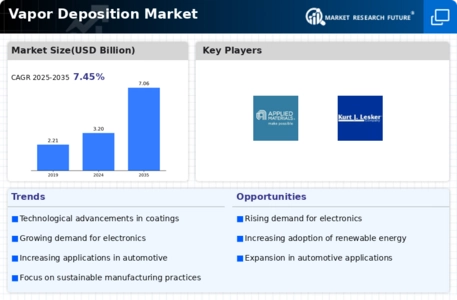

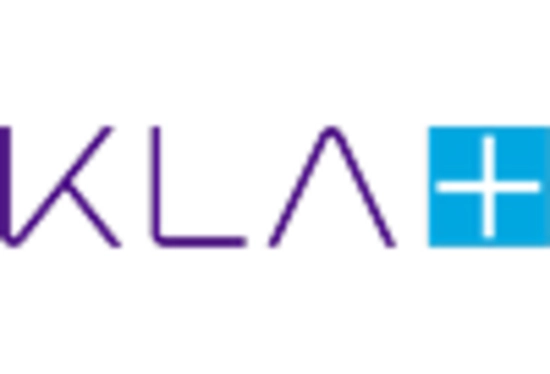
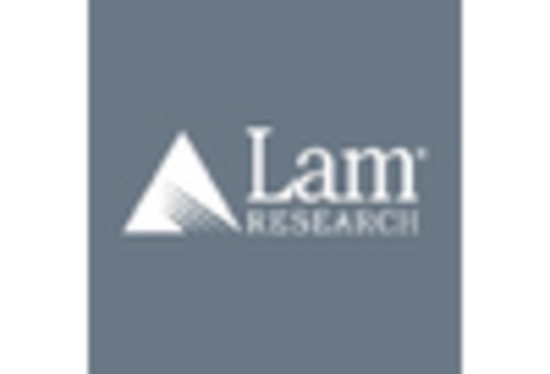
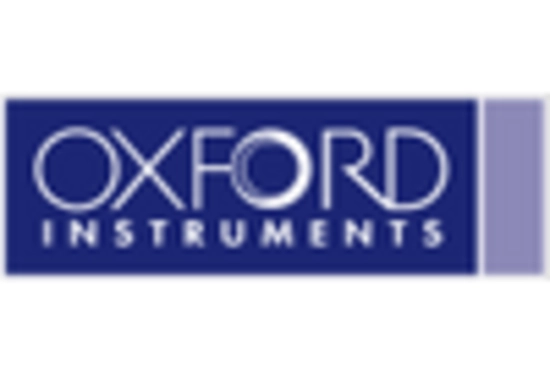
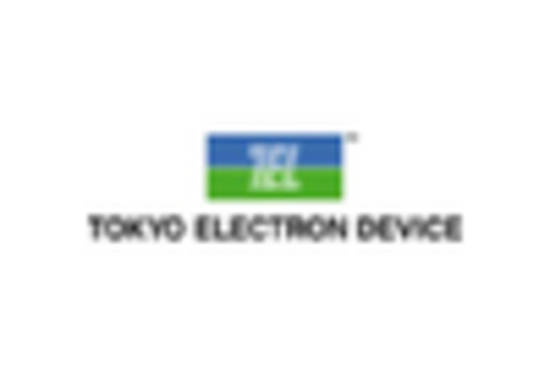
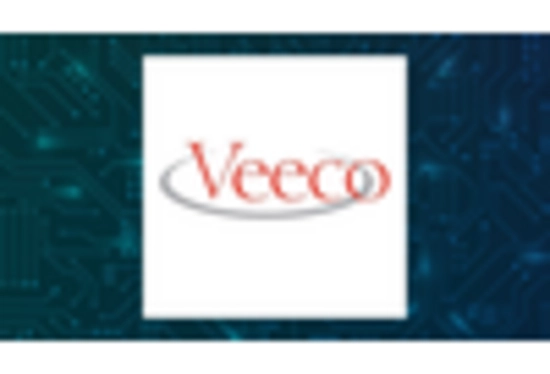

Leave a Comment